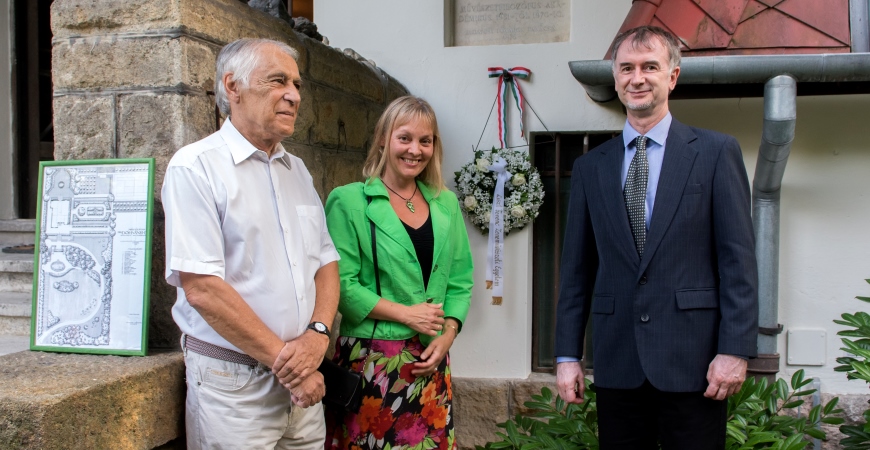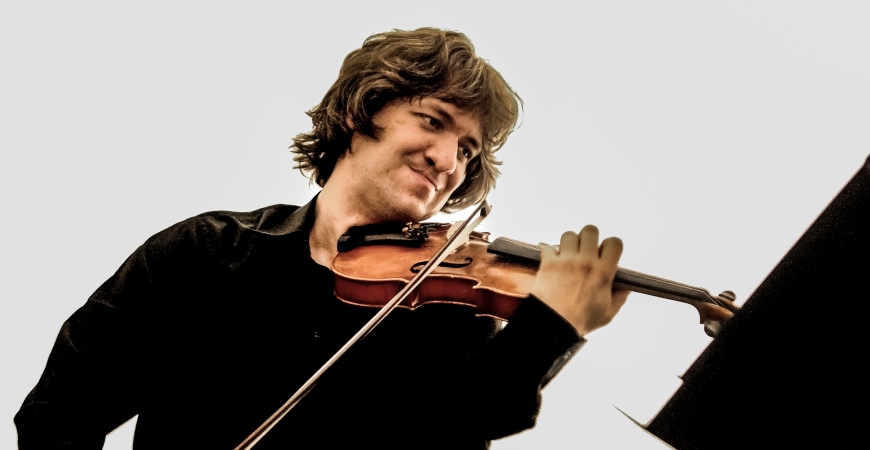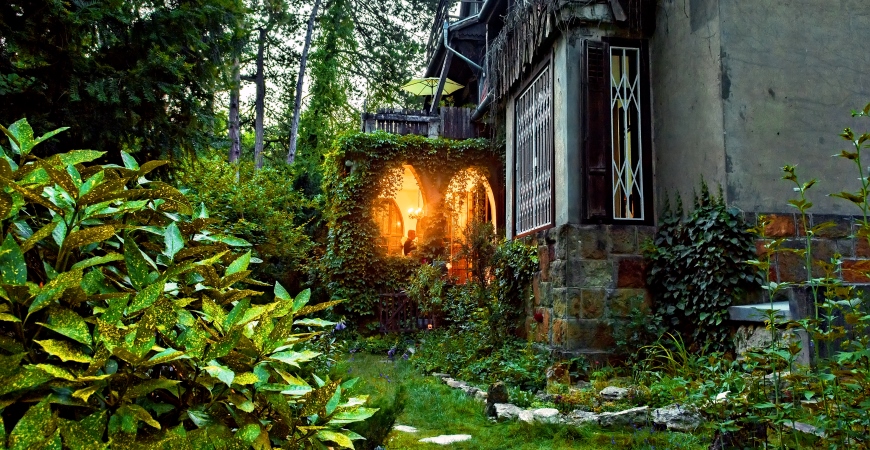Special venue hosting Dohnányi’s 140th birthday celebration
On 23 June, the Dohnányi’s villa and garden – now privately owned- opened its gates to host the composer’s 140th birthday celebration. The invitees attended a wreathing ceremony, an out-of-the-ordinary villa and garden tour, and for the first time in the history of the building, a concert in Dohnányi’s study.

Photo: Liszt Academy / Andrea Felvégi
The jubilee ceremony was organised by the Liszt Ferenc Academy of Music and the Association of Dohnányi Gardens, held in the Széher Street Villa of Ernő Dohnányi – now privately owned. The plaque placed on the villa’s front wall was wreathed by the President of the Liszt Academy, Dr Andrea Vigh, in honour and commemoration of the unforgettable former President of the institution. In her speech, she pointed out that it is the duty of all cultural stakeholders to commemorate with stern regularity all auspicious anniversaries, important sites connected to the great figures of our nation as well as all their lines written, all their bars composed and bequeathed on us. Dr Vigh told the attendees how the contemporary intelligentsia felt at home in Dohnányi’s music saloon or in the masterfully designed garden: „Not only once did the president and professor of the Liszt Academy give his lectures in this house to the members of his legendary class: Annie Fischer, Géza Anda, Kornél Zempléni, Béla Böszörményi-Nagy, Andor Földes, György Solti were given here the jewels of knowledge and art that would accompany them a lifetime by Dohnányi, who was an equally ingenious composer and performer.” Finally, Dr Vigh thanked Zsófia Ruttkay, the Chairperson of the Association of Dohnányi’s Gardens, who – while engaging many others – has been working hard on the conservation of the ethos, the cultural and horticultural values of the site for decades, placing thereby a new point of orientation and research field on the map of Hungarian music history.

Photo: Liszt Academy / Andrea Felvégi
Following the wreathing ceremony, the attendees could enjoy an absolutely unique concert: although also there had been guided tours and concerts in the villa before, Dohnányi’s study had never been involved in those endeavours in this way. The evening’s featured musicians were the members of three generations, including one of the most devoted interpreters of Dohányi’s oeuvre, Ilona Prunyi and her permanent chamber music partner, Ádám Banda or the Soós String Quartet made up of Liszt Academy students.

Photo: Liszt Academy / Andrea Felvégi
As the closure of the evening, the guests were guided around the villa and gardens with this historically unparalleled background by the landscape architect, garden historian and founding member of the Association of Dohnányi’s Gardens, Gábor Alföldy. The visitors could admire document previously undiscovered: the original plans of the villa and gardens as well as some period-photographs. In 1925, after several highly successful concert tours, Dohnányi decided to find himself and his three-generation family a permanent home. His friend, the physician Vilmos Manninger drew his attention to his neighbouring grounds, whose beauty, lush flora and small pond immediately fascinated the composer and pianist Dohnányi. He commissioned the US-wide acclaimed architect Béla Gyöngyöshalászi Takách – who had also designed Manninger’s home - to design the villa with his personal unique requirements. The building hosting three generations had Hungarian looks but a British interior arrangement: the attic with the staff and guest rooms, the first floor with parents and childrens’s bedchambers, two bathrooms, the grandmothers’ quarter and a large hall, while the ground floor was designed for community rooms: the dining room, the saloon, the study and recreation room, the kitchen, the dumbwaiter and a large roof terrace. The garden was designed by the certified garden architect László Solty, who also set up a bathhouse, pergola stairs, arbours, glasshouse and a tennis court in there.


